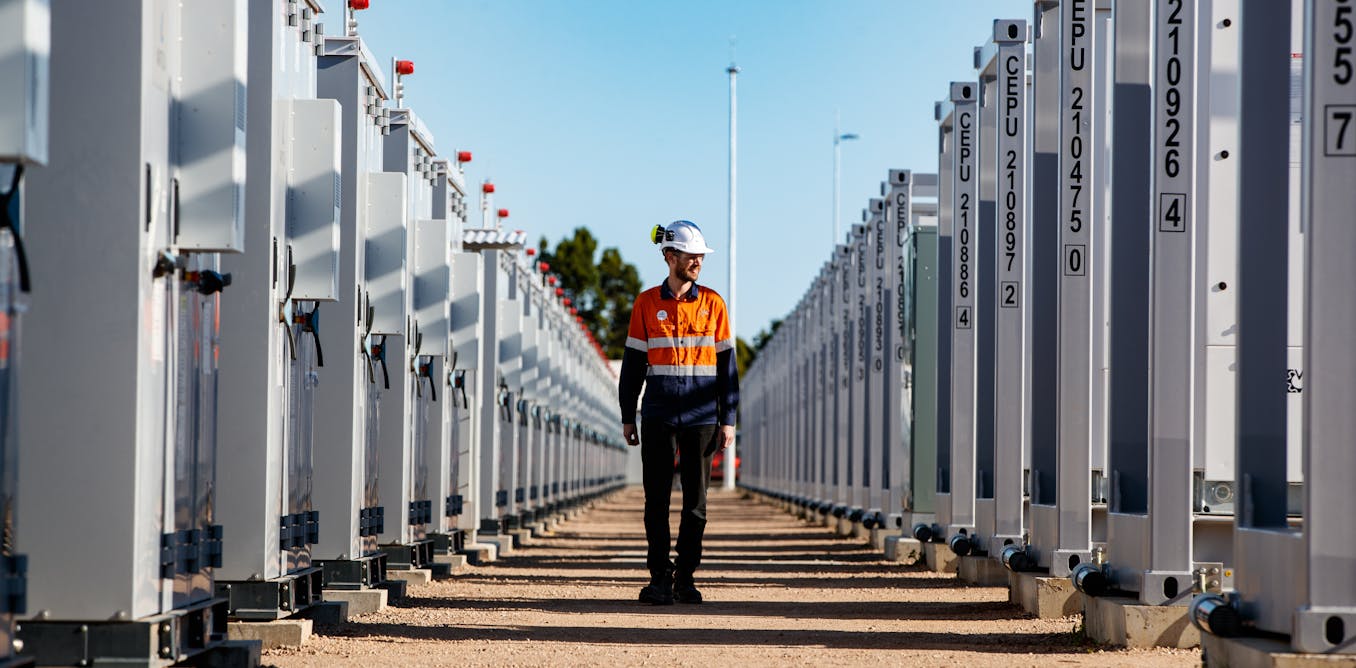Since the early 1990s, the small blue Energy Star label has appeared on millions of household appliances, electronics and even buildings across the United States. But as the Trump administration considers terminating some or all of the program, it is worth a look at what exactly this government-backed label means, and why it has become one of the most recognizable environmental certifications in the country.
Energy Star was launched by the U.S. Environmental Protection Agency in 1992 and later expanded in partnership with the Department of Energy with a simple goal: making it easier for consumers and businesses to choose energy-efficient products, helping them reduce energy use and save money, without sacrificing quality or performance.
As a scholar of energy conservation, I have studied the Energy Star program’s development and public impact, including how it has shaped consumer behavior and environmental outcomes.
According to the EPA, it has saved consumers an average of US$15 billion a year on energy costs since its inception, a massive return on a program that costs taxpayers an estimated $32 million a year.
How Energy Star works
When you see an Energy Star label on a product, it means that product has met strict energy efficiency standards set by the EPA in collaboration with the U.S. Department of Energy, which tests how much energy appliances use. The federal agencies also consult with product manufacturers, utilities and others to figure out how best to improve products and determine how cost-effective changes might be.
Products that earn the Energy Star certification typically use significantly less energy than standard models, often between 10% and 50% less. The energy – and financial – savings can add up quickly, especially when homes or buildings have multiple Energy Star appliances and systems.
Energy Star itself does not manufacture or sell products. Instead, it acts as a trusted third-party certifier, providing consumers and businesses with reliable information and clear labeling. It also offers information to help people estimate energy savings and compare long-term costs, making it easier to identify high-performing, cost-effective options. Manufacturers participating in Energy Star seek to improve their environmental reputation and increase their market share, giving them a strong incentive to meet the program’s efficiency criteria.
Today, the label appears on refrigerators, dishwashers, laptops, commercial buildings and even newly built homes. The government says people in more than 90% of American households recognize the label.
AP Photo/Joshua A. Bickel
People don’t always choose efficient products
Energy Star seeks to tackle a wide range of problems that can result in people deciding not to buy energy-efficient products.
One problem is that efficient models often come with higher up-front costs. While efficient models save money over time, that higher purchase price can discourage buyers. Energy Star helps counter this problem by clearly showing how much money can be saved on energy costs over the lifetime of the product – as compared with noncertified products – and by offering rebates that reduce the initial expense.
Another problem involves what economists call “split incentives.” A landlord might not want to pay a higher price up front for energy-efficient appliances if the tenants are the ones who will save money on the utility bills. And renters may not want to spend a lot of money on appliances or equipment in a place they do not own. Energy Star tries to bridge this divide by promoting whole-building certifications, which encourage landlords to invest in their buildings’ energy efficiency with the goal of making their properties more attractive to tenants.
The countless varieties of refrigerators, dishwashers, air conditioners and other items on the market can also create confusion. Consumers who just look at manufacturers’ promotional material may find it very hard to determine which appliances truly deliver better energy efficiency. The Energy Star label makes this comparison easier: If the label is there, it is among the most efficient choices available.
And consumers are often skeptical of manufacturers’ claims – especially when it comes to new technologies or environmental promises. Energy Star’s status as a program backed by the government, rather than a private company, gives it a level of independence and credibility that many other labels lack. People know the certification is based on science, not sales tactics.
Lastly, Energy Star helps overcome the problem that many people are not aware of how much energy their appliances consume, or how those choices contribute to climate change. By connecting everyday products to larger environmental outcomes, Energy Star helps consumers understand the effects of their decisions, without needing to become energy experts.
The program delivers real results
Since its inception, more than 800,000 appliance models have earned Energy Star certification based on the criteria for their type of product.
The same principles that make the label valuable for consumer appliances – independent certification, clear metrics and a focus on results – have proved equally effective in real estate. Nearly 45,000 commercial buildings and industrial plants have earned certification. And there have been more than 2.5 million Energy Star-certified homes and apartments built in the U.S.
In 2023 alone, over 190,000 new homes and apartments were certified, representing more than 12% of all new residential construction nationwide.
Energy Star-certified homes are designed to be at least 10% more energy efficient than those built to standard building codes, with more insulation and windows and lights that are energy-efficient, as well as appliances. These enhancements can translate to better quality, comfort and long-term cost savings for homeowners.
Commercial buildings, which account for about 18% of total U.S. energy use, have also benefited substantially. Research I was involved in found that certified commercial buildings use an average of 19% less energy than their noncertified counterparts.

Markus Scholz/picture alliance via Getty Images
Why government leadership matters
Energy Star’s status as a government-led label contributes to its credibility as a more neutral and science-based source of information than commercial labels.
Energy Star’s government connections also bring scale: By requiring federal purchases to have Energy Star certifications, the federal government can influence manufacturers. For example, a federal executive order in 1993 required government agencies to purchase only computers that had been Energy Star-certified, which required them to have energy-saving sleep functions.
In response, manufacturers began including the feature so they could sell their products to the government. Consumers soon came to expect the sleep feature on all computers.
A quiet success story in energy and climate
Energy Star does not grab headlines. It does not rely on regulation or mandates. Yet it has quietly become one of the most effective tools the U.S. has for improving energy efficiency across homes, offices and public buildings.
That said, the program is not without its limitations. Some critics have pointed out that not all certified products consistently perform at the highest efficiency levels. Other critics note that the benefits of Energy Star are more accessible to wealthier consumers who can afford up-front investments, even with available rebates. And the EPA itself has, at times, struggled to manage the certification process and update standards in line with the latest technological advances.
At a time when energy costs and climate concerns are rising, Energy Star stands out as a rare example of a practical, nonpartisan program that delivers real benefits. It helps individuals, businesses and communities save money, lower emissions and take part in a more sustainable future – one smart decision at a time.

The post “Energy Star, on the Trump administration’s target list, has a long history of helping consumers’ wallets and the planet” by Magali A. Delmas, Professor of Management, Institute of the Environment and Sustainability, Anderson School of Management, University of California, Los Angeles was published on 06/12/2025 by theconversation.com


































Leave a Reply